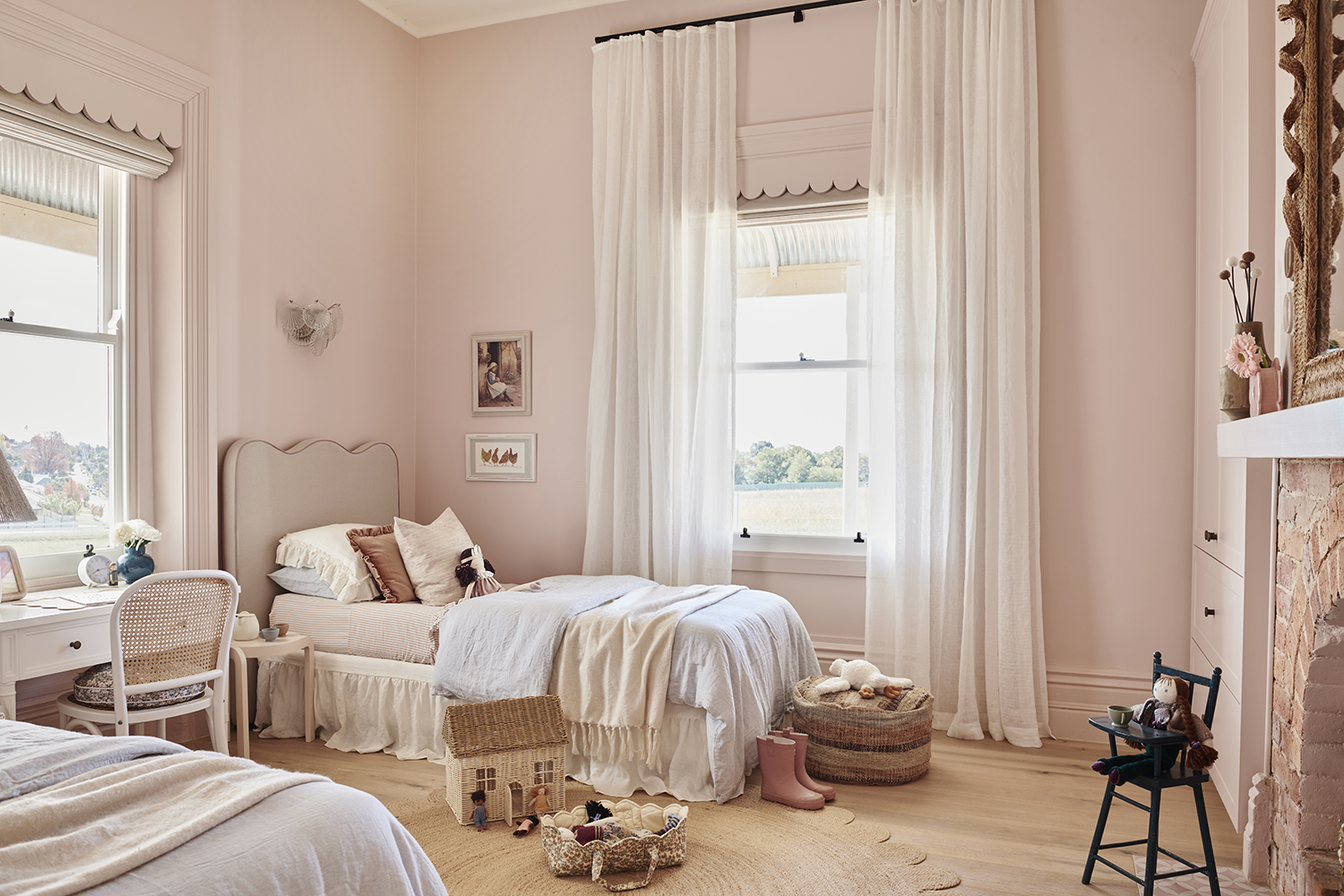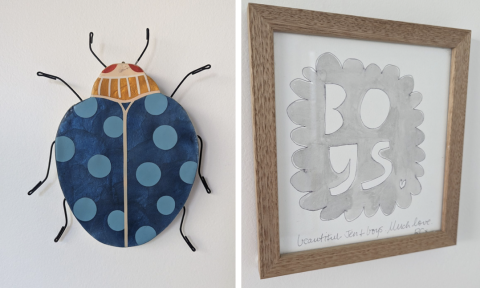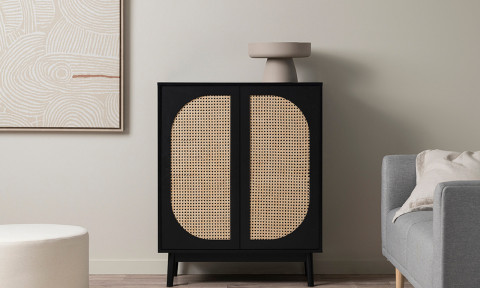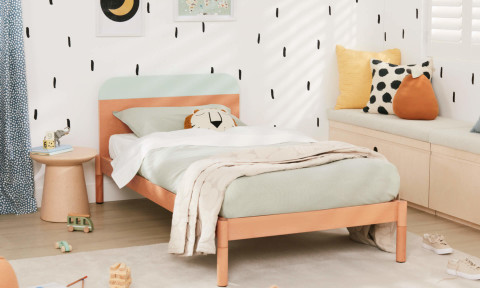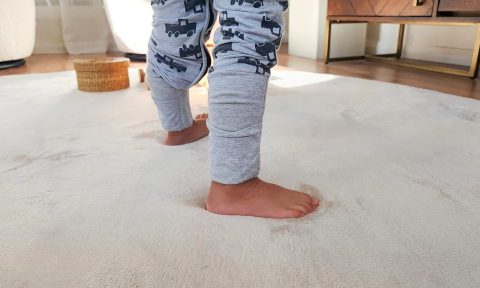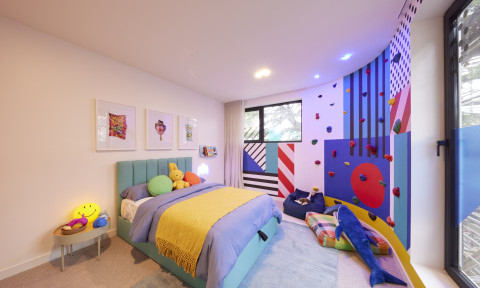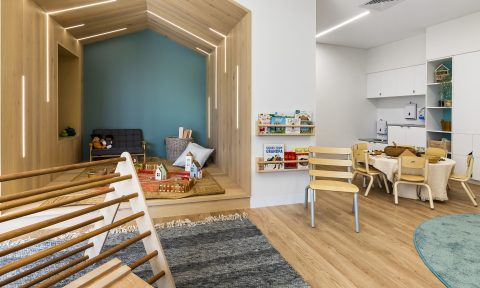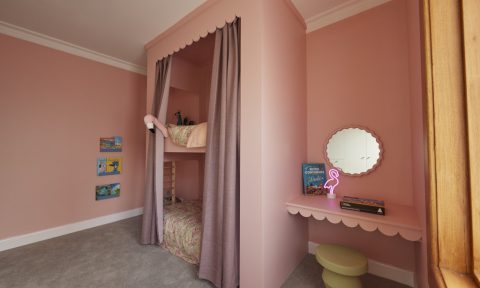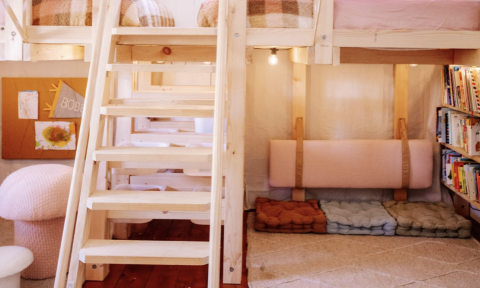By Rachel Lacy
It’s tempting to go bright and bold when choosing a paint colour scheme for a child’s bedroom. But is a palette that promotes energy and activity really what you’re after in a space where a child is expected to slow down and sleep?
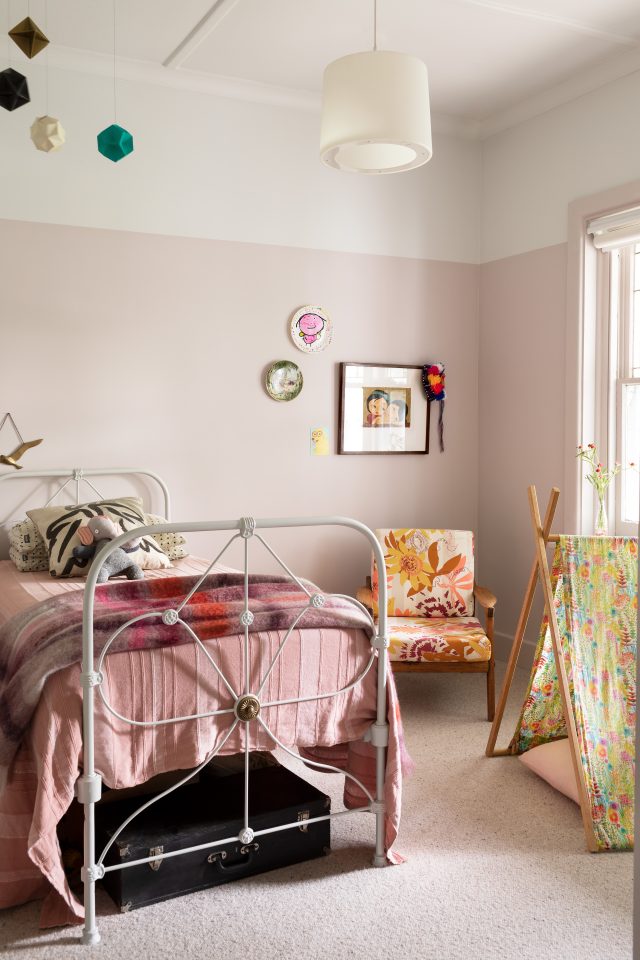
Science tells us that colour has the ability to affect how we feel. It can calm or excite, make us feel warm and cosy or light and free. So, when it comes to choosing colours for a child’s bedroom, it’s important to select carefully.
Warm colours – such as oranges, reds and yellows – are associated with feelings of happiness, cosiness and comfort, while cool colours – such as blues, greens and light purples – can calm and soothe.
Playing it cool
Soft, cool colours are best in a child’s bedroom. This is ultimately a space for sleeping and quiet time, and the environment needs to reflect that.
Whether you’re painting for a newborn or a teen, the same rule applies: resist the urge to paint with fun and stimulating colours, and instead create a space that’s conducive to calm and drifting off to dreamland.
Muted or slightly muddy colours, including soft greys, sage greens, dusky pinks and pale blues, are the perfect choice. Not only do they evoke a calm and soothing vibe, but these enduring neutral tones will see your youngster through every stage of childhood.
Additionally, green is known to bring a soothing sense of nature indoors, creating a great space for children to read or do their homework, while pink inspires feelings of comfort and is associated with love, kindness and femininity, and pale blue is considered a calming and reassuring colour.
If a child’s bedroom doubles as a play space, brighter colours can be added with accessories, such as cushions, blankets, playmats and toy tubs, and packed away at bedtime.
Out of the shade
A monochromatic colour scheme in a neutral colour is an often-overlooked, but excellent, combination for a child’s room. Haymes Paint’s ’Natural Series’ is a range of colours derived from nature, with each available in seven progressive shades from light to dark. Employing different shades of the one Natural Series colour is an effective way to inject movement and interest without ending up with a colour scheme that resembles a bowl of Skittles.
Consider using different shades of the one colour to define different elements in the room, such as the walls, ceiling, doors, and trims. It’s not only stylish but also helps kids, especially younger ones, navigate the space and feel reassured.
Soft warm greys are among my bedroom favourites. All colours look good against a warm grey, so it’s easy to add brighter elements to the room without fighting with the wall colour.
Colours to avoid
Red is an especially stimulating colour and can make a great accent to help spark focus and energy in the right space. But that space is generally not a child’s bedroom, and especially not a toddler’s bedroom.
Bright yellow has also been ruled out of order for baby’s nurseries, with suggestions it makes them more likely to cry. While the scientific jury is still out on this claim, there is no doubt bright yellow is also highly stimulating and far from a safe choice in a space calling for a sense of tranquillity.
We also know stimulating colours, headlined by red and yellow, are harder to look at, causing fatigue and sometimes even irritation of our eyes. They also don’t age well. Who wants to repaint a child’s room every year or so because the chosen colour scheme is so yesterday?
As a general rule, if you wouldn’t consider using a particular colour or colour scheme in other rooms of the house because they’re too loud or too much of a passing fad, you shouldn’t inflict them on your children or their bedrooms.
Rachel Lacy is the colour lead at Haymes Paint. She has a background in paint manufacturing, patenting of cutting-edge paint products, and colour consultancy and forecasting. Her knowledge and expertise have seen her work across New Zealand, Japan, the US, and the UK.
Photography: Martina Gemmola
